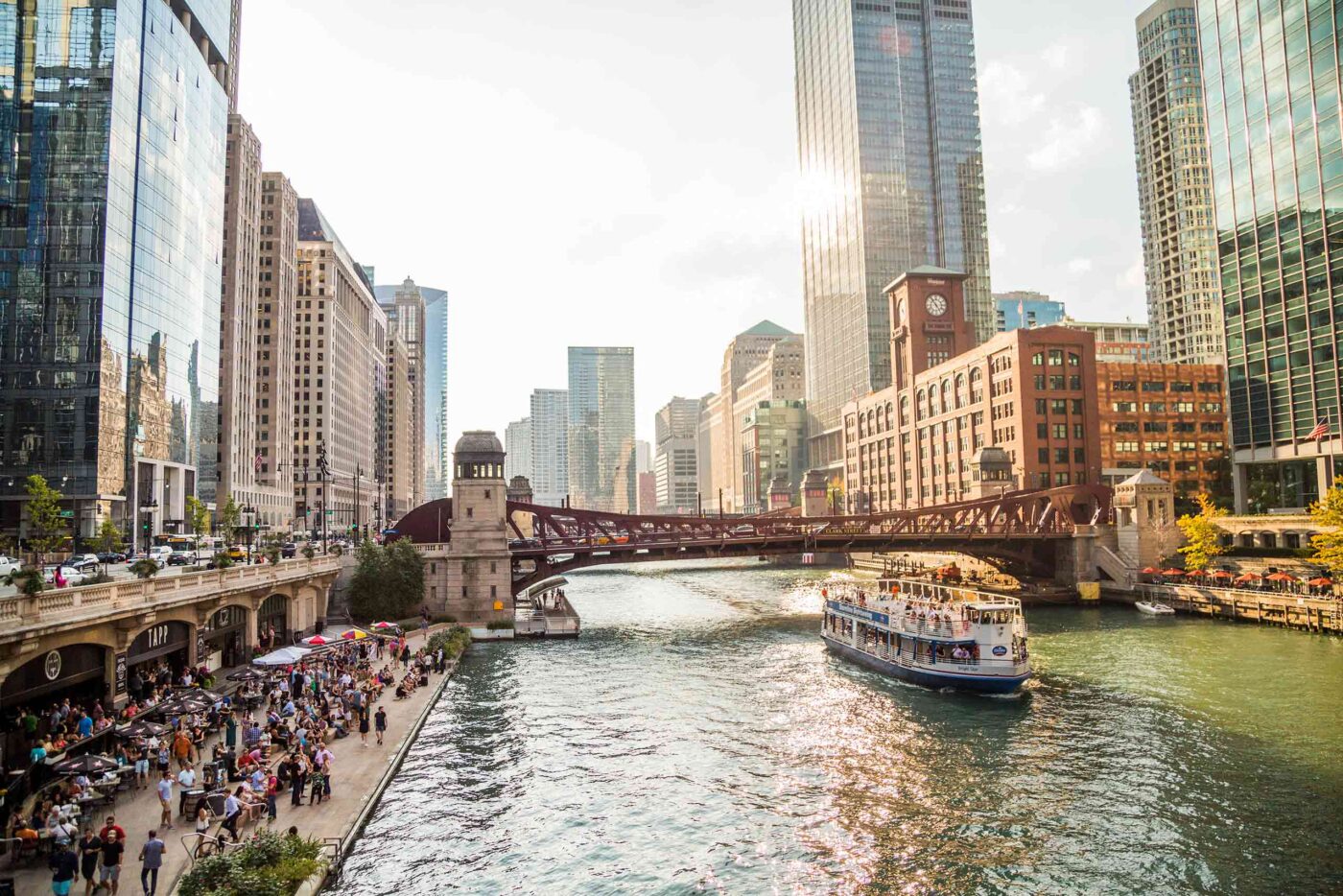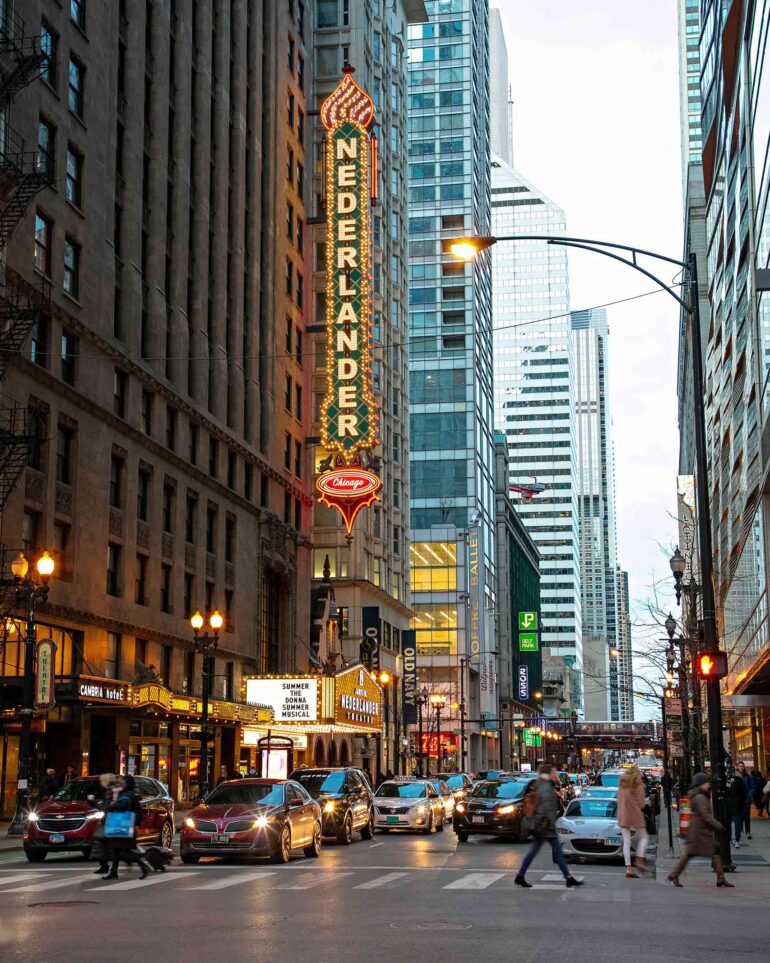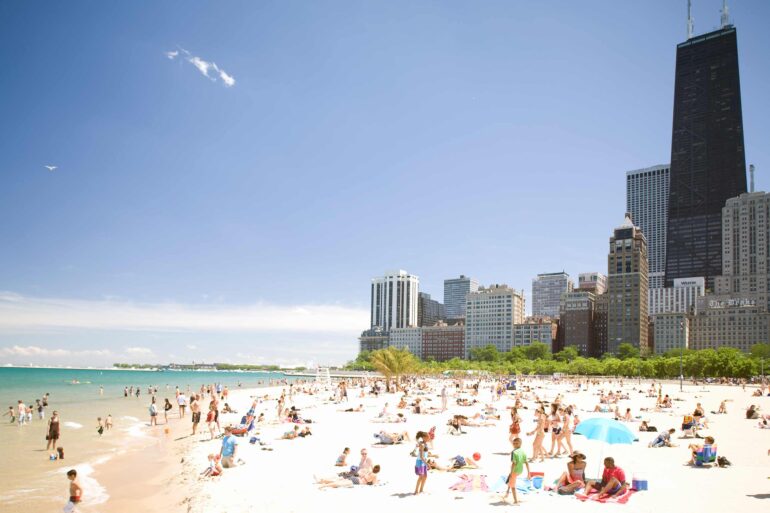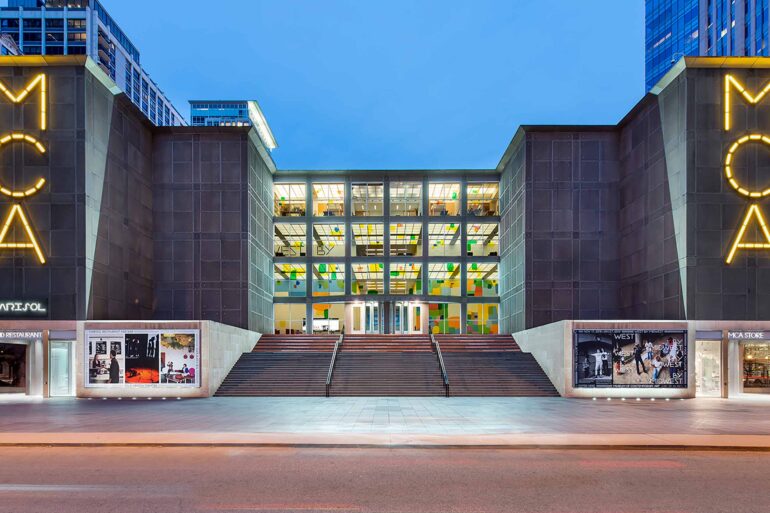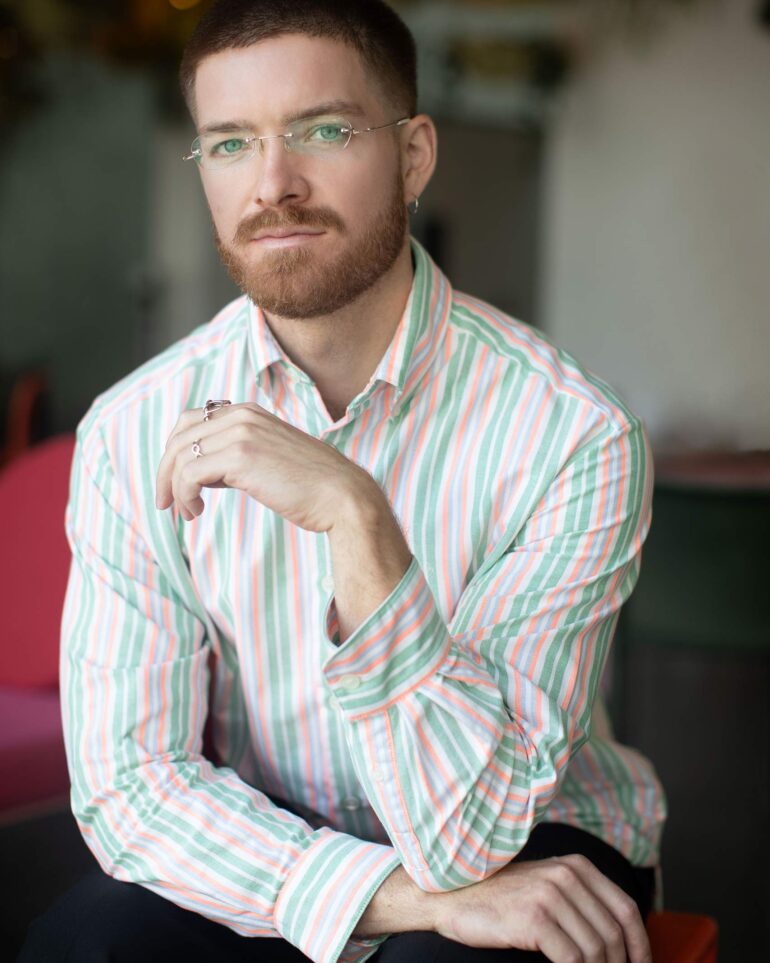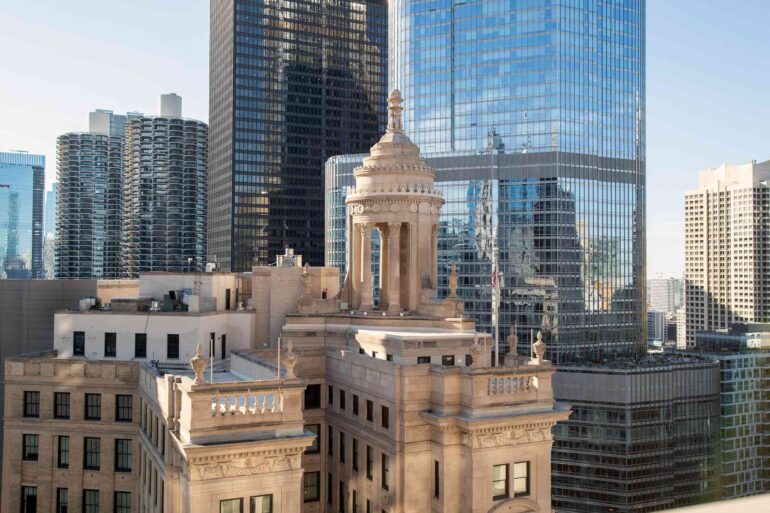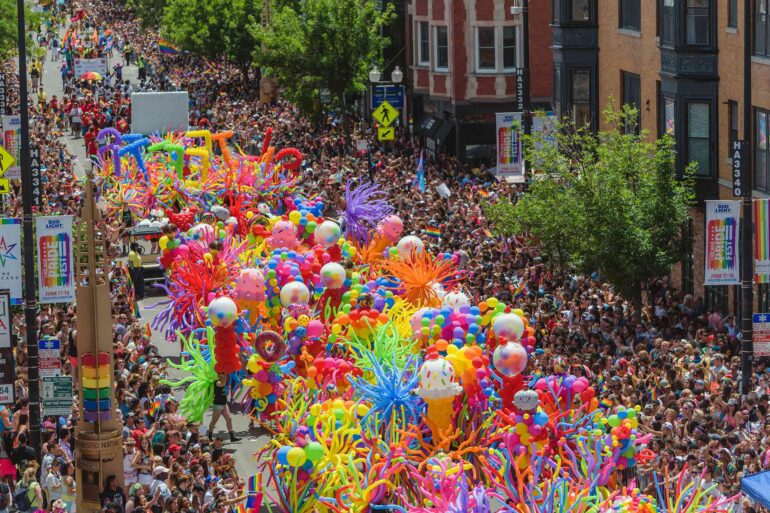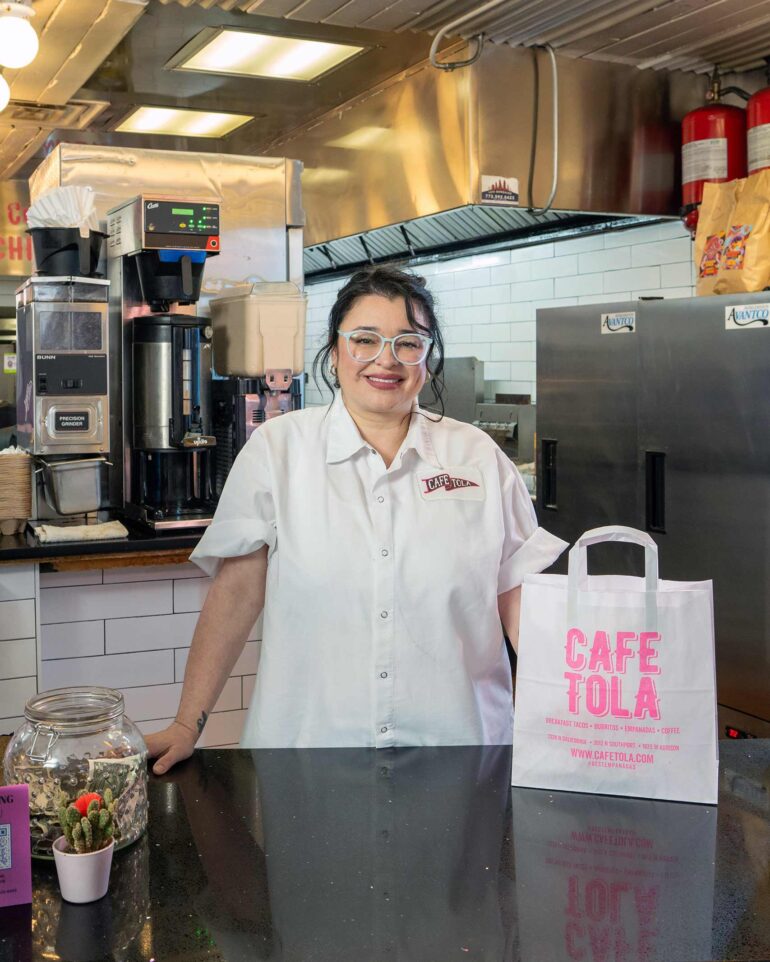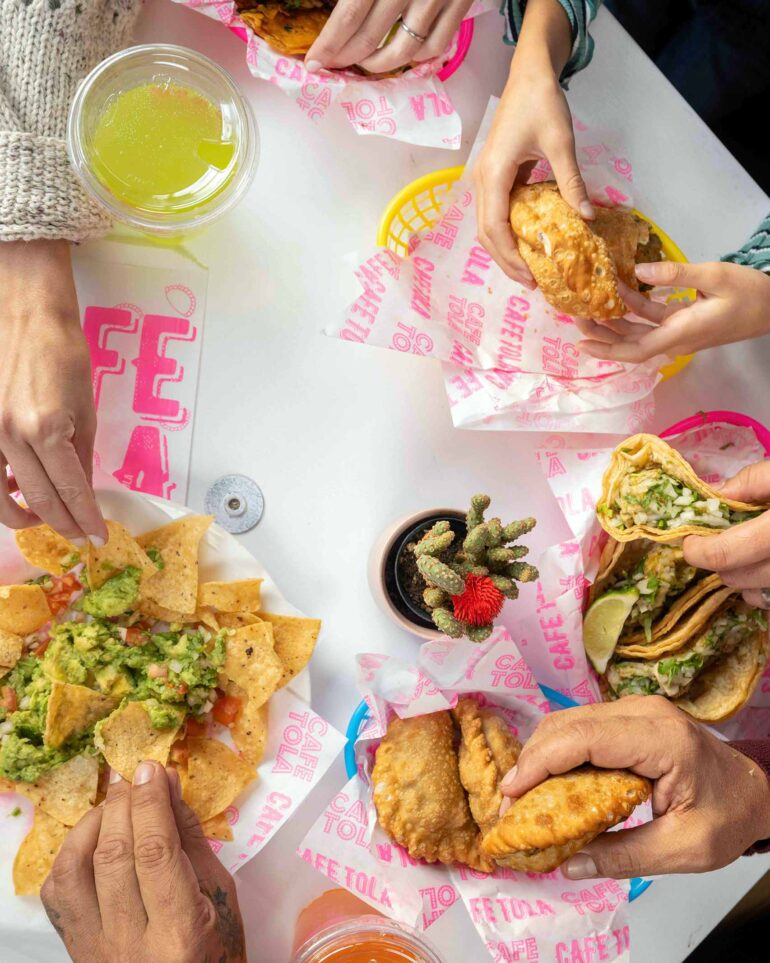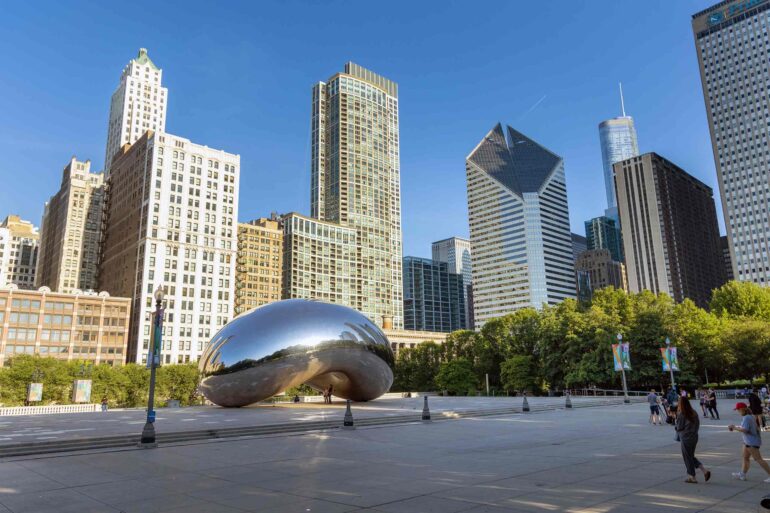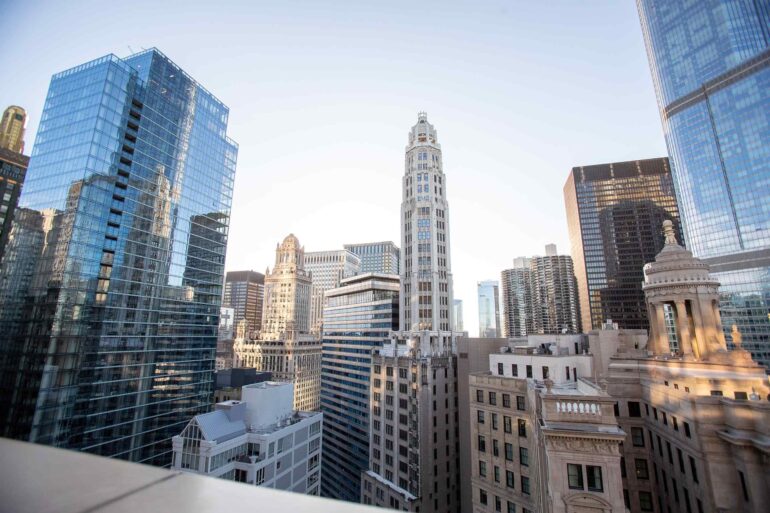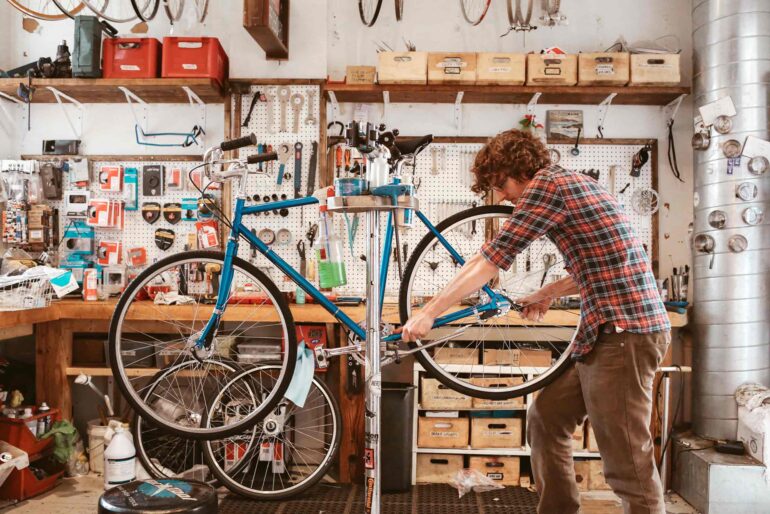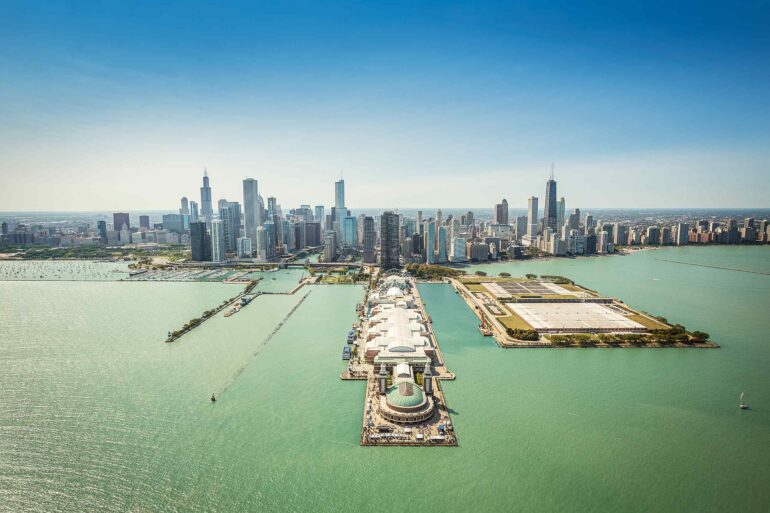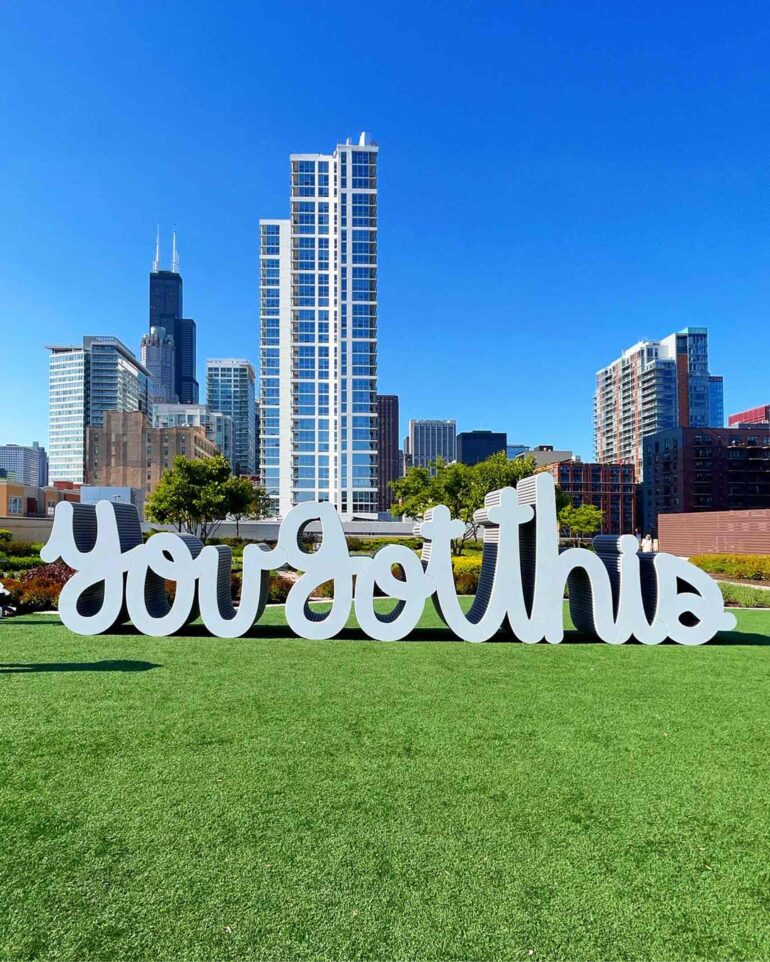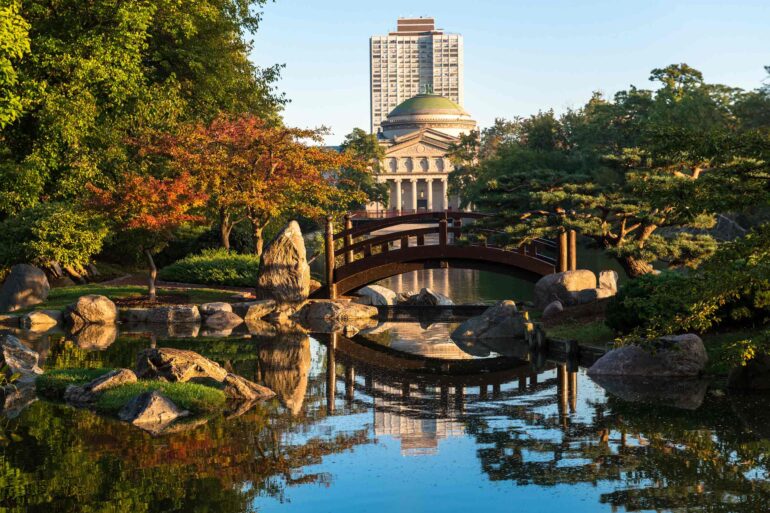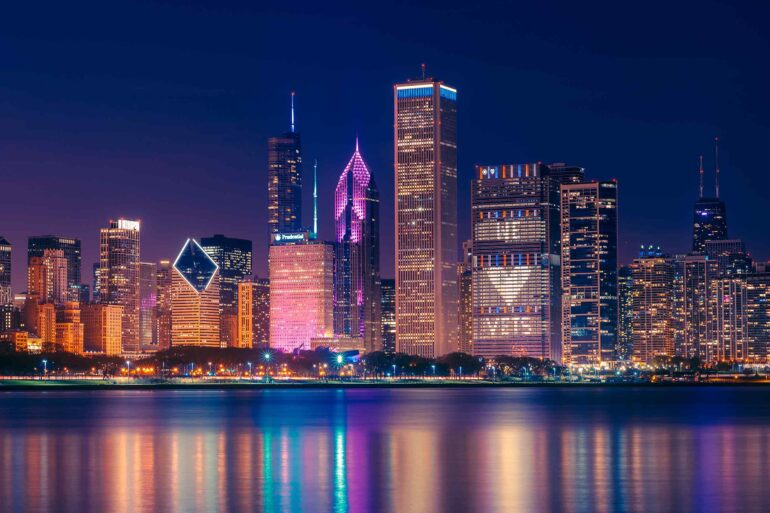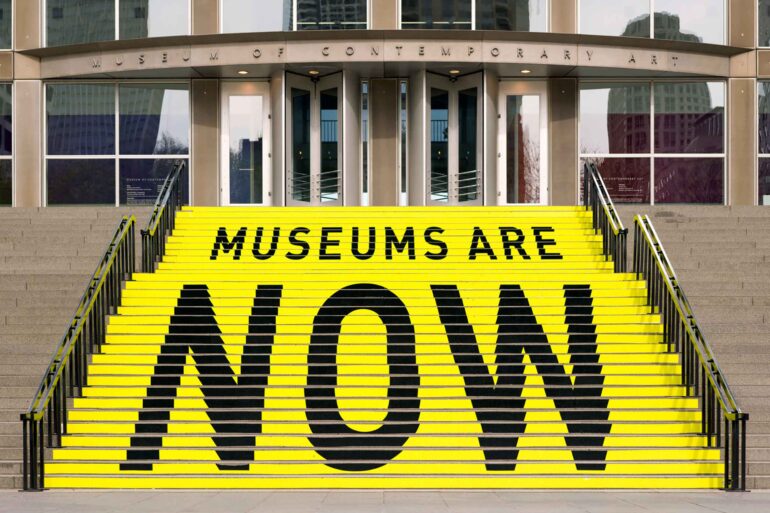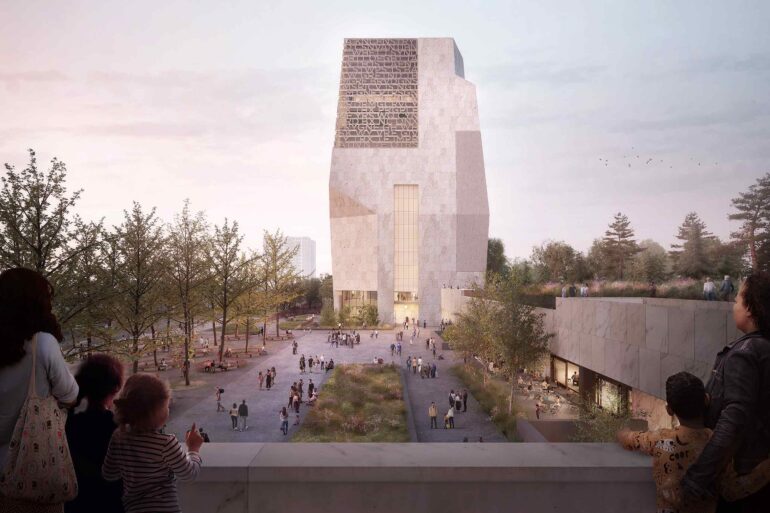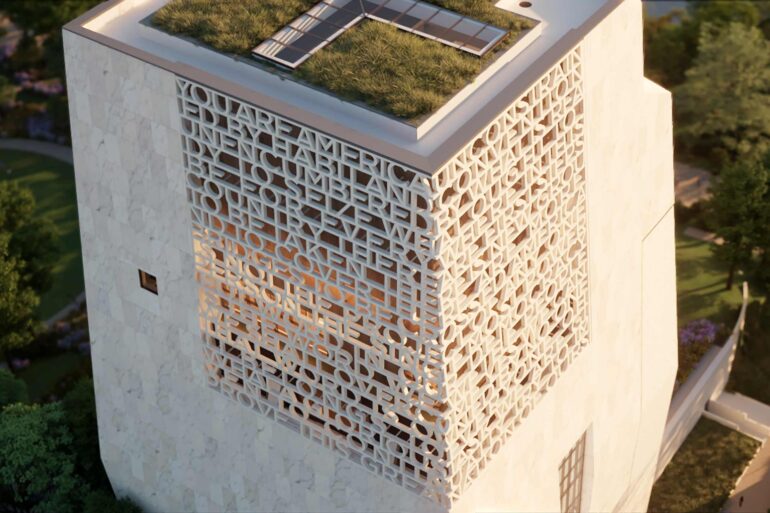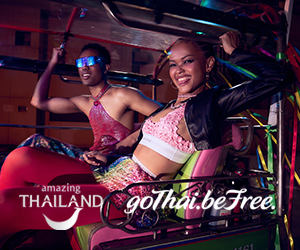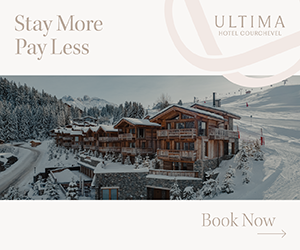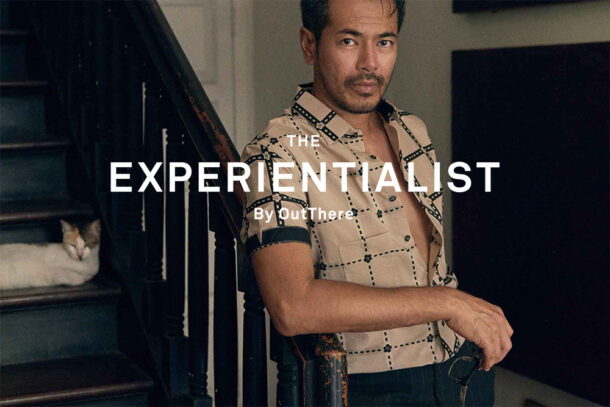Vibrant, diverse and ever-evolving, Chicago is a dazzling exemplar of sleeves-rolled, creative Midwestern can-do. From architecture to dining, green spaces to nightlife, hospitality to shopping across its 77 neighbourhoods, this pioneer city just keeps serving thrilling self-renewal.
“A lot of cool things begin in Chicago,” says Gerardo Salamanca, at the kitsch-muraled Café Tola, the empanada restaurant he and his chef wife Victoria opened in 2012 in leafy Lakeview when she suggested repurposing the office of his underused pest control company. “Today we have six branches across the city and one in New York.”
A mile south, Mike Salvatore is chatting to customers in Heritage Bikes & Coffee, the shop he opened the same year, and whose instant success with the local community has since springboarded four more hospitality businesses across Chicago. “People here love their neighbourhoods and are always looking for cool local products and businesses to support,” he says. “Growing up in Rogers Park north of here, I never even had a chain brand pizza. Always local.”
Across the city, in the South Side’s Hyde Park, Erick Williams, chef/owner of Virtue restaurant, calls Chicago “an incredible place for independent entrepreneurs, with passionate communities that value authenticity and innovation. In its food culture, whether it’s fine dining, food trucks or artisanal markets, the commitment to quality, craftsmanship, and creativity is unparalleled.”
All three are part of their home state’s Illinois Made program, an initiative to celebrate characterful entrepreneurs, artists, crafters and makers of all kinds – from beekeepers to glass-blowers, from fashion brands to bakers – and which currently honours some 276 creators and their products. We tell five of their individual stories in this section. And together, they are a testament to a typically Midwestern – and quintessentially Illinois – drive to roll up sleeves and give the world something new and unique.
Another Chicago hallmark, says Erick, is “a spirit of collaboration and excellence”. And with 77 neighbourhoods and extraordinary ethnic and social diversity – fittingly, given the city’s foundation in 1837 by Haitian explorer Jean Baptiste Point du Sable, who settled here with his Potawatomi wife Kitihawa – this palpably powers both faithful preservation of ‘home’ cultures and cross-pollinations that create new ones. It’s a unique effect that’s also apparent in the art world, which here runs the gamut from world-famous, classical institutions such as the Art Institute of Chicago to prestigious niche and contemporary galleries to emerging, experimental spaces. Born here and fiercely loyal to his hometown, Theaster Gates, currently the city’s most significant artist, fuses architecture, social activism and intersectional allyship into installation works which are shown all over the world. Matthew Hoffman meanwhile foregrounds accessibility with pop, large-scale public sculptures and murals of upbeat mottos such as Boystown’s Amazing for all, which have become beloved features of multiple neighbourhood streetscapes. High-profile, mainstream platforms are also increasingly being offered to local artists from underrepresented communities, such as Moises Salazar, a non-binary, first-generation Mexican-American multidisciplinary artist whose works combine colourful whimsy with sharp defiance, have been shown at the Museum of Contemporary Art (MCA Chicago).
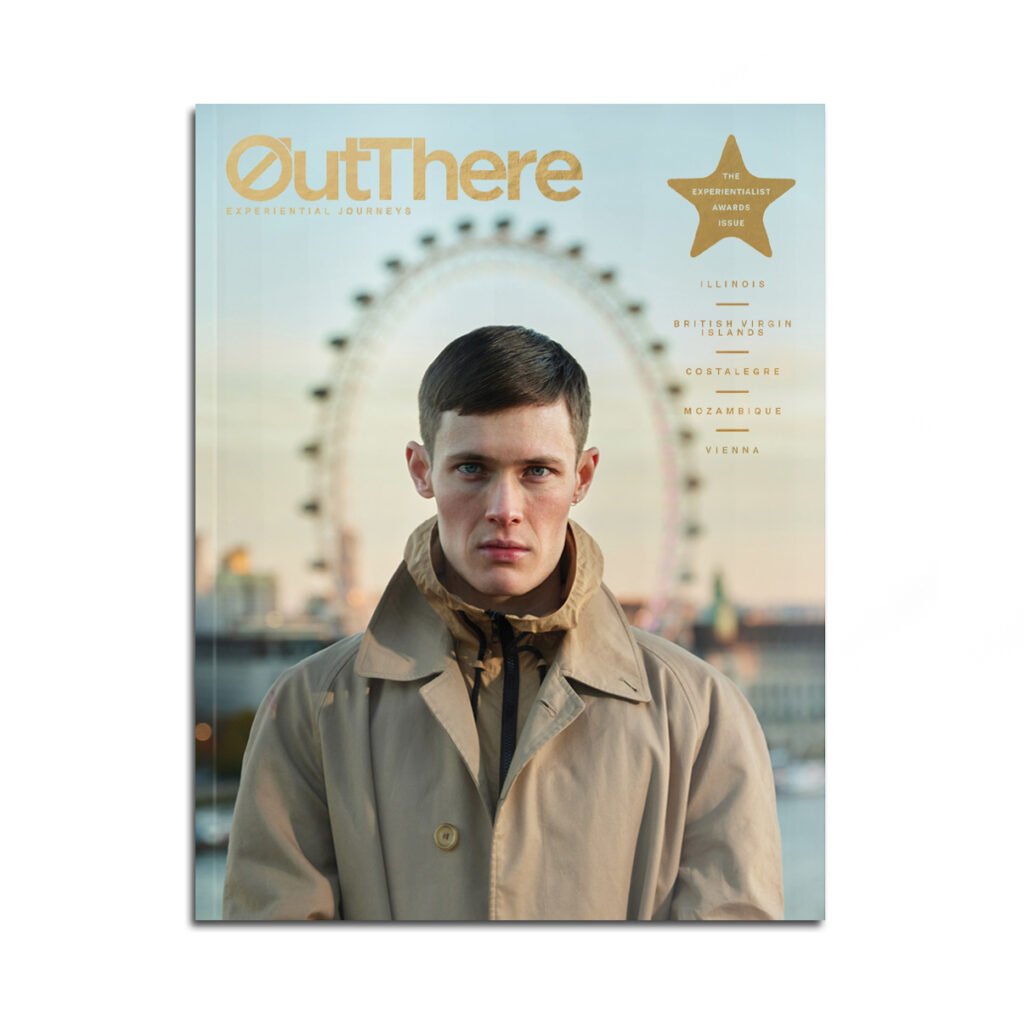
This story first appeared in The Experientialist Awards Issue 2025, available in print and digital.
Subscribe today or purchase a back copy via our online shop.
MCA Assistant Curator (and “lapsed artist”) Jack Schneider moved to Chicago from Minnesota to study art. And while he has seized the opportunity to contribute to MCA’s strong record of exhibiting queer artists, and is currently working on the intergenerational group exhibition City in a Garden: Queer Art and Activism in Chicago, his long-term allegiance to the city’s art scene was first won by its wealth of independent, artist-run spaces powered by affordability of space compared to, say, New York or LA. In 2017, he and artist Tim Mann set one up, Prairie, in the cool Lower West Side neighbourhood, which he still co-directs. Other inde-pendent spaces he recommends are Iceberg Projects and Wright-wood 659, a kunsthalle focusing on queer and East Asian art in a stunning building by Japanese starchitect Tadao Ando.
Another draw for Jack was Chicago’s legendary club scene. “When I moved here, and would, in some random park, see a family with kids and grandparents having a picnic to real Chicago house music, music largely invented by queer black people, I found it incredible that this music’s a point of civic pride.” And while, like many queer Chicagoans, Jack is thoughtful about the effects of gentrification on traditionally LGBTQ neighbourhoods and the loss of “purposefully creatively transgressive queer spaces – the net positive of course being that queerness is more acceptable much more widely,” – he cites Smartbar, the enduringly authentic Wrigleyville house club whose wild Sunday night Queen! still features founding-father DJ Derrick Carter, the city’s robust drag scene and Dorothy, a new, community-vibed lesbian bar in Logan Square, as positive reflections of a proud counter-culture.
Of course, Chicago’s most-seen creative expression is its extraordinary downtown skyline, that forest of gleaming towers and historic landmark buildings charting modern architecture’s every leap skyward of the last 140 years, that hugs the snaking Chicago River’s twin branches and looms over Lake Michigan. A stellar recent addition has been the sexily statuesque St. Regis Hotel Chicago by local architect Jeanne Gang, the world’s tallest building designed by a woman. But the city’s latest built showstopper is taking shape some 10km (seven miles) south, in the rapidly regenerating residential neighbourhood Hyde Park, famously championed by sometime residents the Obamas, whose first kiss is marked by a plaque on a street corner here.
Due to open in spring 2026, the Obama Presidential Center, presided over by a sculptural low tower by New York architects Tod Williams and Billie Tsien, is a huge new museum, learning and recreation campus that will further elevate and connect the neighbourhood through an ingenious fusion of art, urban sustainability, cultural reconciliation and community outreach. “Firstly,” explains the project’s Chief of Staff Cate Hill, “we’re on indigenous American land, so we’re working with representatives of Ojibwe, Odawa and Potawatomi nations on sustainability and natural plants and flora as we transform the landscaping to create multiple community spaces.”Regeneration, reconciliation and community empowerment have informed every aspect of the centre’s design and construction, from the 30-plus monumental in- and outdoor installations commissioned from diverse artists to the kitchen-garden workshop referencing Michelle Obama’s home-growing to accompanying new transport connections and lakefront walking and cycling trails all the way to the city. “We’re telling the story of the disinvestment that’s happened in the nearby neighbourhoods,” Cate says. “Owning the history and racism there, and kind of turning the page on a new way forward for the South and West Sides.”
Photography courtesy of Illinois Office of Tourism and Matthew Hoffman of You Are Beautiful. Renderings courtesy of the Obama Presidential Center


